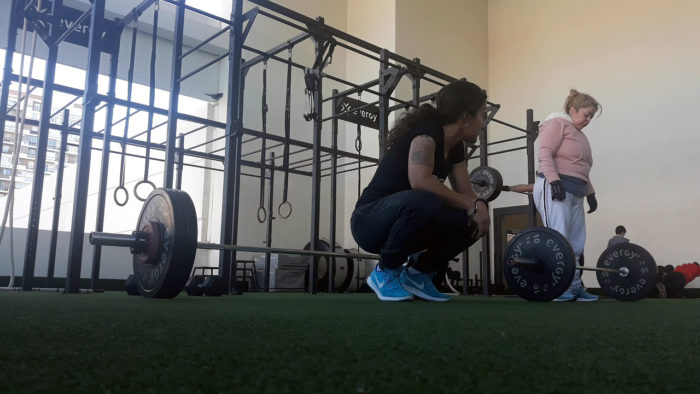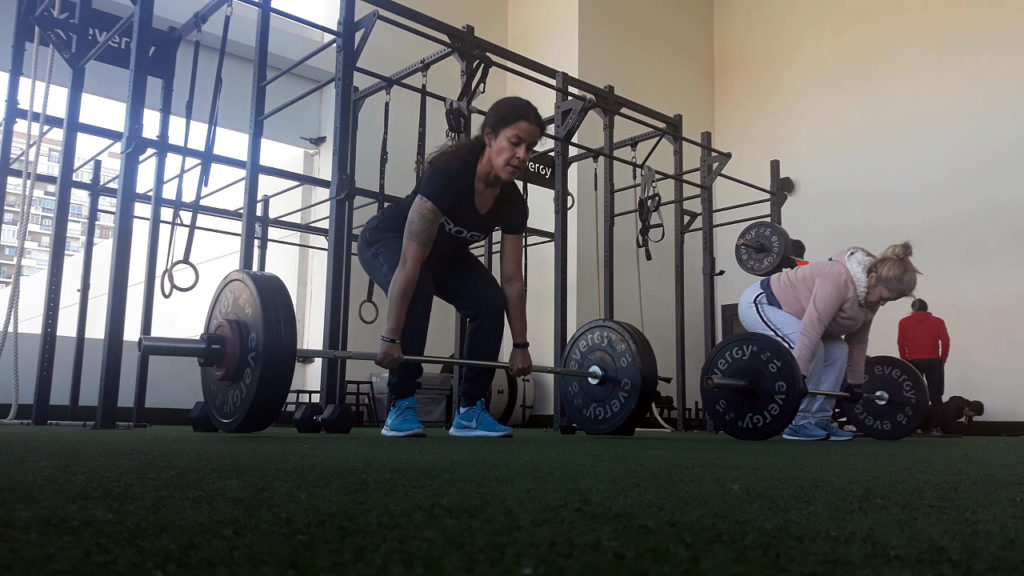Motivación en CrossFit
Algo que es bien sabido respecto al CrossFit es que suele percibirse como un deporte que motiva mucho. El objetivo de este artículo es ahondar un poco más en el significado de esta percepción. Para ello, debemos empezar con lo básico: ¿qué es la motivación?
La motivación es el proceso a través del cual una persona se encuentra «activada y dirigida hacia un fin» (Ryan y Deci, 2000). Nuestro cerebro activa una serie de acciones para satisfacer una necesidad específica. Esto puede variar desde coger un vaso de agua para saciar tu sed hasta estudiar Derecho porque es lo que haría feliz a tu madre.
Pese a que hay distintas maneras de categorizar los motivos, hay una que me interesa especialmente; es aquella proporcionada por Deci y Ryan (1985) en su Teoría de la Autodeterminación. Distingue entre motivación intrínseca y extrínseca. En términos llanos, «la motivación intrínseca se refiere a hacer algo porque es inherentemente interesante o placentero, y motivación extrínseca, se refiere a hacer algo porque conlleva una consecuencia externa.» (Ryan y Deci, 2000).
Figura 1. Tipos de motivación y otros factores
| Mot. extrínseca | Mot. intrínseca | |
| Procesos relacionados | Ego Aprobación de otros | Disfrute Interés |
| Control percibido | Algo externa | Interna |
Adaptado de Ryan y Deci (2000)
La motivación extrínseca (ver figura 1), en una de sus muchas variantes, es guiada por el ego. Ergo, la conducta es regulada por factores tanto internos como externos. Mientras que la meta depende de establecer la mejor puntuación, la razón que lo explica es aportar evidencia de que uno es superior al resto. Por otro lado, centrarse en la tarea, tiene que ver con motivos internos: trabajar duro para completar una tarea, satisfacción personal e interés.
La motivación intrínseca aumenta a medida que desarrollamos competencia en la tarea y percibimos que controlamos nuestro éxito. Naturalmente esto facilita la adherencia al deporte. En cambio, cuando prevalece el ego, la mayor preocupación del atleta es ser el primero. Si este objetivo no se cumple, aparecen sentimientos de incompetencia y, en el peor de los casos, puede conllevar un abandono del deporte.
¿Cómo influye el CrossFit en la motivación?
No puedo hablar por todos los que han probado el CrossFit pero sí puedo decir que es el deporte que más me ha motivado. Tiene los beneficios del deporte colectivo (sentimiento de pertenencia, trabajo en equipo, afiliación, etc.) y los del deporte individual (desarrollo de competencia, satisfacción personal, etc.) Te enfrenta a tareas diferentes cada día, resultando en desafíos nuevos. Algunos de los movimientos requieren mucha práctica y, una vez empiezas a notar mejoría, ¡empiezas a sentirte capaz de cualquier cosa!

Afiliación, disfrute y desafío
Como hemos visto, la motivación intrínseca se relaciona mejor con la satisfacción personal y la autorrealización. Motivos como la afiliación, disfrute y desafío ayudan a presentarnos en el box, día tras día. Estos motivos son más frecuentes en CrossFitteros en comparación con otros formatos de entrenamiento personal o de resistencia (Fisher, Sales, Carlson y Steele, 2016).
El CrossFit es un lugar inmejorable para experimentar la magia del ejercicio en grupo por el aspecto de la «comunidad». El WOD es percibido como un desafío personal al que nos enfrentamos en un contexto grupal. Ver a otros sufrir a tu lado te empodera y te motiva como ninguna otra cosa que haya visto.
Ayuda a dirigir tu motivación hacia el interior
Los procesos motivacionales son muy complejos, están en constante cambio y son modificados según circunstancias internas y externas. Pese a que los motivos externos parecen el enemigo, esto no es del todo cierto. Los motivos externos como el reconocimiento social pueden hacer que pises un box por primera vez. Después de eso, la camaradería, el método y esa sensación de superar obstáculos pueden invertir la dirección de tu motivación. No importa lo que te meta en el CrossFit, sólo asegúrate de que te quedas por los motivos correctos.
Deci, E. L., & Ryan, R. M. (1985). Intrinsic motivation and self-determination in human behavior. New York: Plenum.
Duda, J. L., Chi, L., Newton, M. L., & Walling, M. D. (1995). Task and ego orientation and intrinsic motivation in sport. International journal of sport psychology.
Fisher, J., Sales, A., Carlson, L., & Steele, J. (2016). A comparison of the motivational factors between CrossFit participants and other resistance exercise modalities: a pilot study. The Journal of sports medicine and physical fitness.


